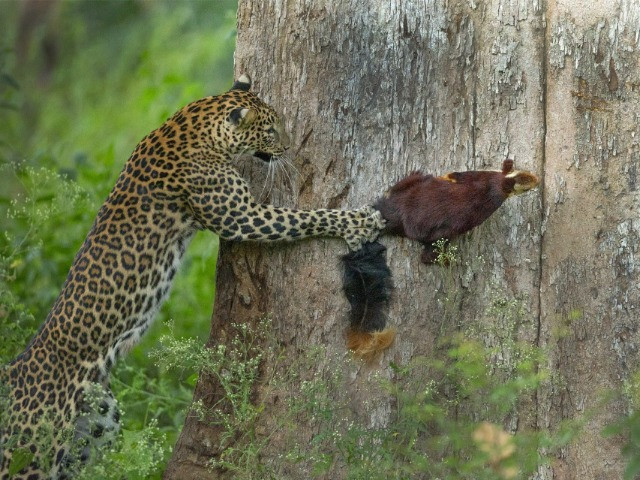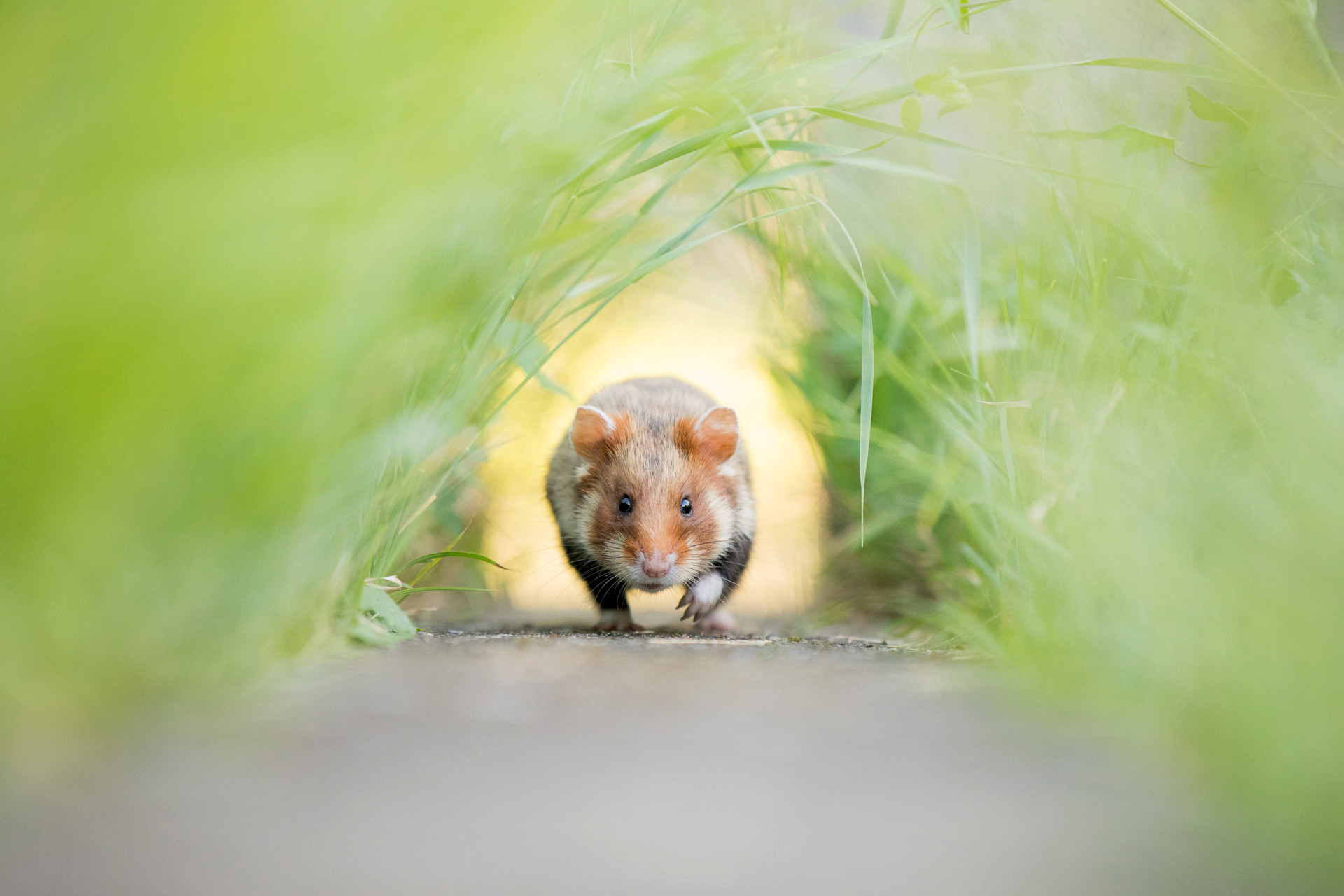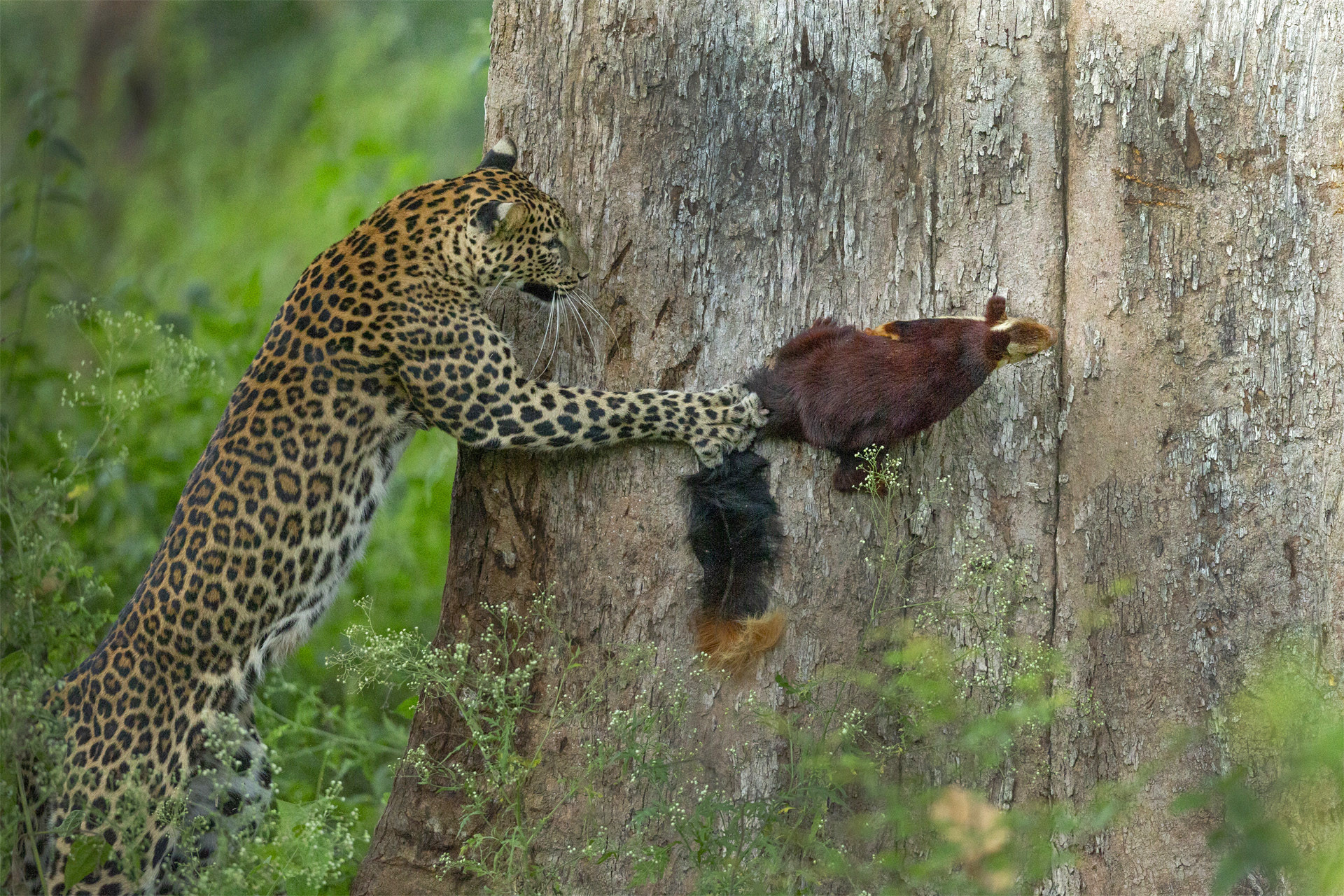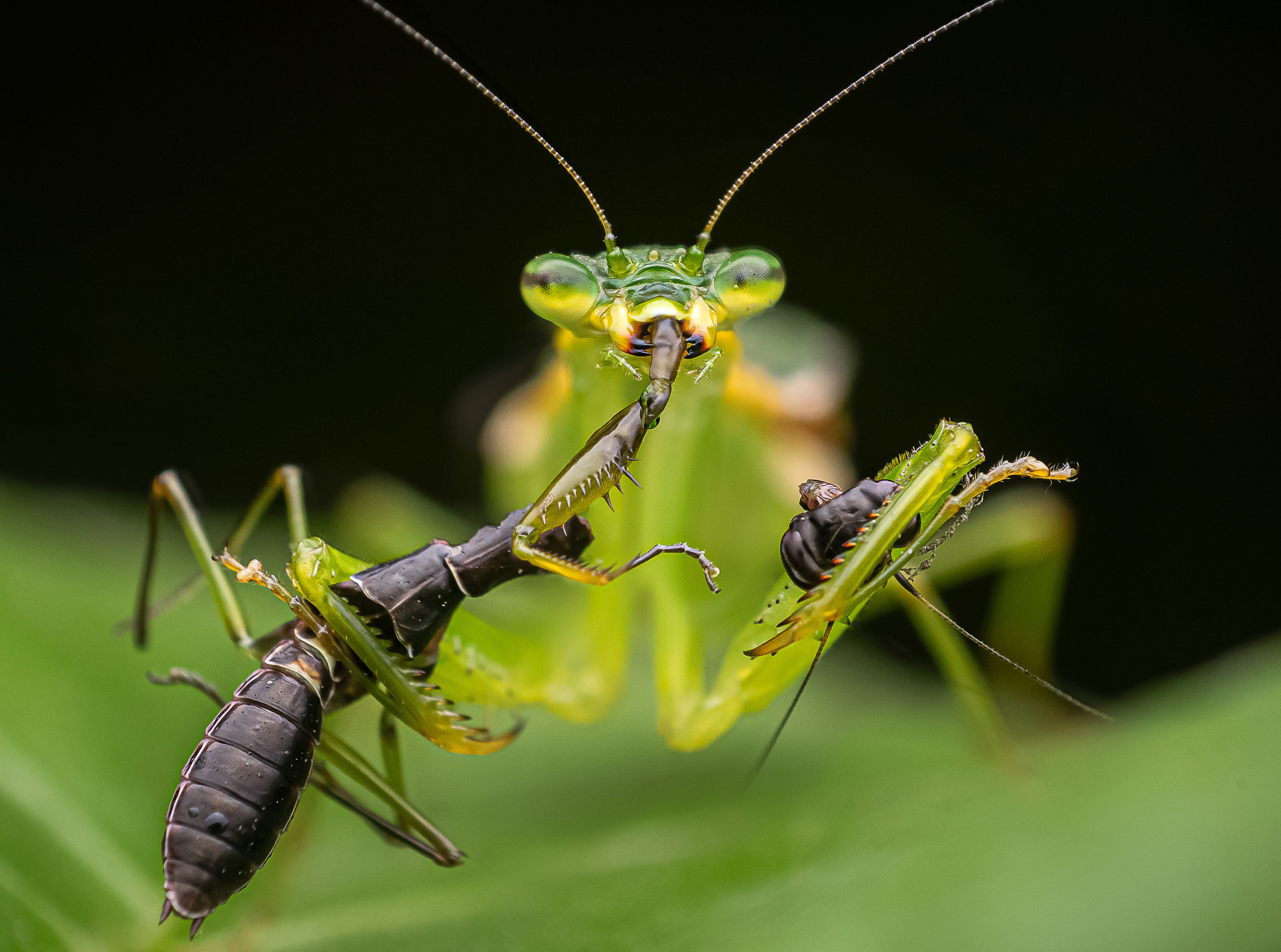The ongoing pandemic meant that we had to skip the Nature inFocus Festival yet again. Instead, the results of the much-anticipated Nature inFocus Photography Contest 2021 were announced at a live virtual event on November 22, 2021.
As is the case every year, we find that our participants continue to push the envelope further and further by sharing truly outstanding moments from the wild. This year, the images highlighted key issues like plastic pollution and deforestation while also shining a light on some lesser-known species and animal behaviours.
We thank our impeccable jury—Andy Rouse, Bahar Dutt, Dhritiman Mukherjee, Navaneeth Unnikrishnan and Rathika Ramasamy—for sifting through thousands of entries and coming up with this truly unique set of images.
Mohammad Murad won the Animal Portraits category, Priyanka Rahut Mitra won the Animal Behaviour category, Prathamesh Ghadekar won the Creative Nature Photography category, Lakshitha Karunarathna won the Wildscape & Animals in Habitat category and the Conservation Issues category was won by Mahisin Khan. Anagha Mohan, who is 15 years old, won the Young Photographer title.
Every year, the jury awards one of the category winners the grand title of 'Photograph of the Year'. But this year, for the first time in the history of the competition, there is no overall winner as the jury found it extremely difficult to give one single image more merit over the rest of the winning images and decided not to award the top prize.
Scroll down to see all the winning images from the latest edition of the Nature inFocus Photography Contest.
City Lights—Mohammad Murad
Winner—Animal Portraits
The photographer spent more than two months observing and documenting the behaviour of Arabian Red Fox families near their dens in the Kuwait region. Although scared at first, the foxes became more comfortable around his presence after frequent visits. They even began to emerge from their dens when they heard the sound of his car and came close enough to inspect his camera gear.
Kuwait
The King’s Feast—Panos Laskarakis
Runner-up—Animal Portraits
During his visit to the Okavango Delta, the photographer chanced upon a pride of lions hunting buffalos. The next night, a pack of 30 hyenas tried to steal the kill from the lions. The place reverberated with roars and howls as a ferocious battle ensued. This image was made the following day when a lone lion was feeding on one of the carcasses.
Okavango Delta, Botswana
Pay Through The Nose—Lakshitha Karunarathna
Second Runner-up—Animal Portraits
Can being nosy also be beneficial? The Yellow-billed Oxpecker says, yes! The bird can be seen perched on the nose of African Water Buffalos, from where it gains an endless buffet of insects and parasites. The giant bovids, in return, gain protection from ticks. Talk about win-win!
Masai Mara National Park, Kenya
Something In The Rain—Viraj Ghaisas
Special Mention—Animal Portraits
The Indrella ampulla snail resides in wet woodlands and is known for the striking range of colours it displays. Pictured here is the eye of a snail against the bark of a tree amidst heavy rainfall.
Coorg, Karnataka
Hamster Wheel Of Life—Kai Kolodziej
Special Mention—Animal Portraits
European Hamsters were once so widespread that they were considered pests. As one of the most colourful mammals in Europe, these small rodents are hunted for their fur. Today, they are quite rare. Vienna is home to a small wild population of these hamsters.
Vienna, Austria
A Bush Elephant—Staffan Widstrand
Special Mention—Animal Portraits
Where the bush ends is where the elephant begins? Or is it the other way round? The African Bush Elephant, also known as the African Savanna Elephant, prefers open savannas, forests and deserts as habitats. This endangered pachyderm is the largest living terrestrial animal, and is found in 23 countries, with the southern and eastern parts of Africa housing the largest populations globally.
Marakele National Park, South Africa
The Resting Monarch—Lakshitha Karunarathna
Winner—Wildscape & Animals in Habitat
A gigantic kaleidoscope of Monarch butterflies sits huddled together on Oyamel Fir trees in the overwintering grounds in the mountains of central Mexico. The tall tree canopy in the cool mountain climate provides a blanket effect, ensuring that temperatures don't go too high or low, protecting the monarchs.
El Rosario Biosphere Reserve, Mexico
Bear In The Woods—Divya Dwaraknath
Runner-up—Wildscape & Animals in Habitat
The photographer was scanning the dry, dense vegetation from the boundary of the tourist and core zone of the reserve, when what looked like a black rock suddenly came into view. For a brief second, through the camera lens, she saw a giant ball of fur looking back at her. One quick snap, and the Sloth Bear was gone!
Nagarahole National Park, Karnataka
Catwalk—Shivang Mehta
Second Runner-up—Wildscape & Animals in Habitat
An Indian Leopard holds a spooked expression as he triggers a camera trap placed amidst the picturesque sal forests in the Terai region of Corbett Tiger Reserve.
Corbett Tiger Reserve, Uttarakhand
A Heritage Sight—Uditchandra Pal
Special Mention—Wildscape & Animals in Habitat
Abandoned buildings often end up being taken over by creatures of the wild. This forgotten part of the fort is now occupied by bats, which has, in turn, attracted pythons, civets, and this Shikra and its family. Bats, rats, squirrels and garden lizards are all fair game for the Shikra.
Ramathra Fort, Rajasthan
Wool In The Snow—Indranil Basu Mallick
Special Mention—Wildscape & Animals in Habitat
A high-altitude leporid native to the Tibetan Plateau, the Woolly Hare is diurnal and can often be found hiding and resting in low-lying areas, expertly camouflaged against its immediate surroundings.
Kibber, Spiti Valley, Himachal Pradesh
A Hiss In The Canopy—Pratik Pradhan
Special Mention—Wildscape & Animals in Habitat
Bamboo Pit Vipers are slow-moving, arboreal snakes that are active at night. Slow they might be, but these vipers can defend themselves with fast strikes when threatened or injured. The photographer spotted this individual in a thick forest patch during peak monsoon. The entire forest was clad in thick fog, creating a serene atmosphere. Though the photographer wanted to capture the ethereal mood on camera, it was nighttime and was raining heavily, making it impossible to do so even after using flashes. He returned the morning after to try his luck and found the snake sitting at the same spot where he had found it the previous night and was able to create this magical image of the reptile against the foggy backdrop of the evergreen rainforest.
Matheran, Maharashtra
Northern Lights—Prathamesh Ghadekar
Winner—Creative Nature Photography
The spores of a bracket fungus (Polypores) create a vast spectrum of colours when lit from an angle. The photographer came across fungi growing on a dead tree log and was amazed by the colours his flashlight picked up. Over two nights, with the wind and the speed of spore release occasionally combining in his favour, he was able to create the image he had previsualized. The photographer flipped the image horizontally to create a wide frame that looked like a landscape shot of Stonehenge-like structures against a gorgeous night sky decorated by the Northern Lights.
Ajoba Parvat, Maharashtra
Rush Hour—Magnus Lundgren
Runner-up—Creative Nature Photography
An underwater shot of a pack of Chum Salmons running up a cold Alaskan creek as they force their way to the sacred reproduction grounds in Prince William Sound. During their perilous journey from the ocean to the stream (where they hatched) to spawn, sometimes, these salmon go through passages with water levels so low they can't even breathe, but they keep going! Once at their spawning ground, these fearless females lay thousands of eggs inside a pit they dig with their powerful tails. The eggs are often fertilised by different males. As her last duty servicing the circle of life, she guards her egg until she dies.
Prince William Sound, Alaska
The Illusionist—Magnus Lundgren
Second Runner-up—Creative Nature Photography
A pelagic juvenile Wunderpus (Wunderpus photogenicus n. sp.) hunting in midwater is a dream image for an underwater photographer. This species is a spectacular, long-armed octopus from the Indo-Malayan archipelago. Their juvenile transparent body decorated with bands of brown on their tentacles gives way as they change colour and size once they settle on the seafloor to live their adult lives. Banded white markings form on their tentacles, and akin to the similar-looking Mimic Octopus, they can mimic other animals.
Balayan Bay, Anilao, Luzon, Philippines
Pixie Dust—Mandar Ghumare
Special Mention—Creative Nature Photography
The milky apparition that appears to be a pixie or a spirit is, in fact, a moth fluttering above a troop of mushrooms. The ghostly image evokes memories of the enchanted woodland creatures that populated the fairytales one grew up reading.
Badlapur, Maharashtra
Blue Symphony—Kallol Mukherjee
Special Mention—Creative Nature Photography
Under an azure sky, a flock of Grandalas cascade down the snow powdered peaks of upper Lachen in Sikkim in notes of blue and grey. Mesmerised by thousands of these rare birds flying over the Lachen River from one tree to another, the photographer captured this multi-exposure image, utilising the light coming in through the alpine forests of the region.
North Sikkim
Neon Night—Ian Wade
Special Mention—Creative Nature Photography
On a night of heavy rainfall, after it had settled down a bit, the photographer headed out looking for snails to photograph. He spotted this individual near a puddle by some shops. The neon signboards reflect off the water, revealing the urban nature of the setting.
Bristol, United Kingdom
Hop Into The Limelight—Anagha Mohan
Winner—Young Photographer
Anagha is a staunch believer that one doesn't have to travel far to photograph wildlife. She loves to spend time shooting insects in and around her locality. This surreal image of a grasshopper resting on a flowering plant was shot in a park on the city outskirts.
Bangalore, Karnataka
Spider Dreams—Anirudh Kamakeri
Runner-up—Young Photographer
Most orb-weaver spiders weave a new web every day and tend to be active during the evening hours. Having observed the spider every evening on the terrace of his house, the photographer visualised this in-camera multi-exposure image, creating a beautiful bokeh from the street lights and signboards and framing the silhouette of the spider within.
Dharwad, Karnataka
Deep Cleaning Services—Shashwat Mohapatra
Second Runner-up—Young Photographer
Rufous Treepies sustain an interesting relationship with their ungulate friends. One can often find them perched on deer and antelopes, on the lookout for fleas and other ectoparasites to fill their bellies. The ungulates are welcoming of their avian friends and allow treepies to examine specific parts of their bodies. A particularly delicate area in this case, and humorously framed by the photographer.
Ranthambore National Park, Rajasthan
Toxic-city—Satya Manidhar Vegi
Special Mention—Young Photographer
Framed against its reflection on a rainwater puddle, the image of a factory releasing toxic fumes into the atmosphere depicts the reality of how it is equally pollutive to the atmosphere and the water bodies around it.
Kakinada, Andhra Pradesh
Entrapment—Adityakrishna S Menon
Special Mention—Young Photographer
The photographer noticed a dragonfly come into his room and hover near a spider's web on the ceiling. The odonate eventually got trapped in the web, and he made this image of the spider closing in on its kill. The photograph was converted to a negative via post-processing, evoking constellations in the night sky.
Ernakulam, Kerala
Love Is Orange—Jeet Agrawal
Special Mention—Young Photographer
A male Rock Agama flaunting a splendid coat of orange and black mounts a female that he appears to have successfully courted as a garden lizard watches on. Rock Agamas create the colours for their extravagant displays by extracting pigments from their diet.
Nagpur, Maharashtra
Evicted—Mahisin Khan
Winner—Conservation Issues
A lone Gharial is portrayed against the backdrop of construction work, highlighting their changing habitats. Endemic to the Indian subcontinent, Gharials were once present in all major rivers in the country. They are now found in only two per cent of their original range. Habitat degradation, hunting for skin and traditional medicines are some of the biggest threats to this critically endangered species.
Bihar
This Divided Land—Gnaneswar CH
Runner-up—Conservation Issues
Did you know that about 58,000 people die due to snakebites every year in India? Here is one of the 'big four'—a Russell's Viper—making its way through a paddy field as women continue to do their work. The 'big four' refers to the four venomous reptile species that contribute to the maximum number of snakebite incidents. In rural areas, these venomous snakes live in close proximity to humans, and awareness becomes imperative to reduce the occurrence of such incidents.
Kanchipuram, Tamil Nadu
Going Astray—Karamjeet Singh
Second Runner-up—Conservation Issues
A growing concern with wildlife conservation in Ladakh is the increasing number of feral and free-ranging dogs. Their ability to multiply fast is considered a threat to the other animals thriving in the same habitat. However, the image shows how the locals have turned this problem into an innovative solution for their woes. The dogs seen here were feral, but the locals domesticated them to later employ them to deter Himalayan Brown Bears from entering their villages. The system seems to work efficiently for the villagers, as the dogs keep the wild animals at bay and alert the people about them.
Drass, Ladakh
Plastic Island—Devendra Chauhan
Special Mention—Conservation Issues
Crocodiles routinely bask in the sun to maintain their body temperatures. This littered basking site of a Marsh Crocodile shows the extent of damage that indiscriminate dumping of plastic and other waste can do. They not only harm the animals but also cause hindrance in their daily activities.
Girnar, Gujarat
Collateral Damage—Deven Mehta
Special Mention—Conservation Issues
An abandoned kite string claims the lives of a River Tern adult and chick. Despite a ban on kite strings made of abrasive materials such as glass powder and metal, kite flying events lead to several birds getting trapped, injured or killed.
Bhavnagar, Gujarat
Fishing For Rubbish—Srikanth Mannepuri
Special Mention—Conservation Issues
A large fishing net seems to have picked up more plastic and debris than the catch. The haul included everything from chocolate wrappers to milk packets, showing the extent of garbage that gets discarded into natural water bodies. Apart from polluting oceans and causing harm to aquatic species, the image portrays how plastic pollution affects the livelihood of fishing communities.
Kakinada, Andhra Pradesh
A Shark For A Fin—Staffan Widstrand
Special Mention—Conservation Issues
A fisherman displays his fresh harvest of shark fins. Sharks are captured live and their fins are cut off before throwing them back into the sea, where they eventually die. Shark fins are a key ingredient in shark-fin soup, and an increase in demand for the fins is causing great harm to the populations of the apex predators.
Triton Bay, Western Papua
The Old Man And The Forest—Thomas Vijayan
Special Mention—Conservation Issues
Our changing world is a significant threat to many living beings around us, one of them being the orangutan. The apes are now dependent on feeding stations as deforestation has massively altered their habitats and food sources. According to FAO, between 2015 and 2020, the rate of deforestation was about 10 million hectares per year.
Borneo, Indonesia
Tag, You Are It!—Priyanka Rahut Mitra
Winner—Animal Behaviour
The leopardess was deep in slumber high up on a tree branch when awakened by the alarm calls of a Malabar Giant Squirrel. On spotting the rodent, she launched an attack, chasing the squirrel around the tree trunk and eventually capturing the animal. Masterful at manoeuvring their habitats, leopards can jump from one tree to another with absolute ease. They can also haul prey twice their size up a tree to feed on the animal in peace. Slim chances for the squirrel, won’t you say?
Bandipur National Park, Karnataka
After ‘While Crocodile!—Rajat Subhra Pramanick
Runner-up—Animal Behaviour
Tigers are not the ones to share space, and the crocodile is learning that the hard way as it gets ousted from felid territory. The big cats are known to patrol their territory routinely, checking for intruders. Tigers are also adept swimmers and can cross large water bodies with ease. The reptile better run for life!
Ranthambore National Park, Rajasthan
Nose-to-Tail Diet—Shuvam Sadhukhan
Second Runner-up—Animal Behaviour
Yikes, talk about getting your head bitten off! While the photographer initially meant to photograph a mantis on its leafy perch, little did he know that another one was lurking in the background. The guest ate the subject, leading to an interesting capture of mantis behaviour. Mantises are generalists and ambush predators and feed on various arthropod species, including some of their own.
Kolkata, West Bengal
Swarm the Sun—Jackson Johnson
Special Mention—Animal Behaviour
These dragonflies don't take their monikers lightly. Globe Skimmers, also called Wandering Gliders, take on long, arduous journeys from India to Africa, and are spotted in large swarms at various places during the trip.
Coimbatore, Tamil Nadu
Cut To The Chase—Kushal Guttedar
Special Mention—Animal Behaviour
Among lions, females are the primary hunters, with males only aiding them in bringing down larger prey. Lions hunt a range of animals, including zebras, wildebeest and warthogs. The image shows a piglet running for its life as a lioness closes in.
Masai Mara National Reserve, Kenya
Who Let The Bees Out!—Shantanu Ambulgekar
Special Mention—Animal Behaviour
Looks like an image of a bird fleeing the scene after being attacked by bees? Look closer! The photographer observed a Blue-bearded Bee-eater making trips to a beehive under a bridge and carrying the catch back to its perch nearby. Suddenly, a swarm of bees launched an attack on the bird—a masterstroke by the bee-eater. Blue-bearded Bee-eaters provoke the release of bees from a hive on purpose so that they can feed on the insects mid-air.
Dandeli, Karnataka







































